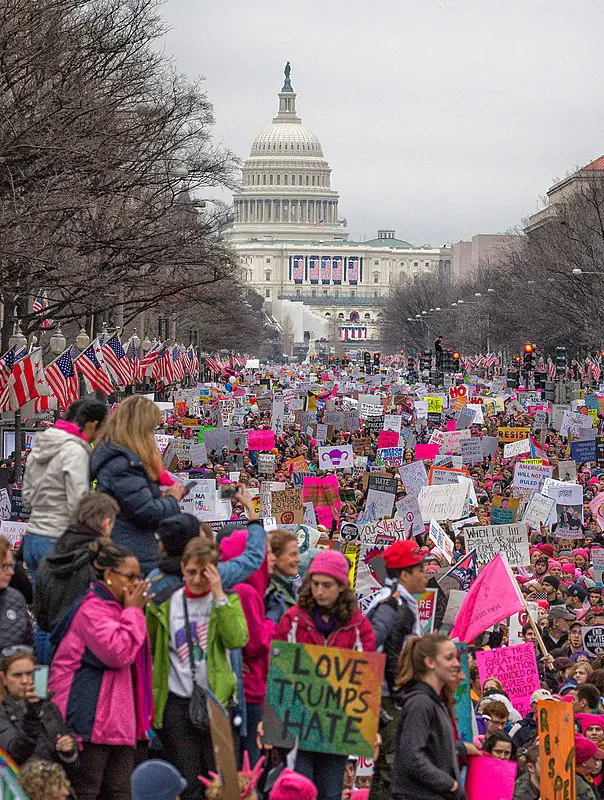
2016 Origins of Most All-Volunteer Grassroots Groups
After Donald Trump’s election in November 2016, people concerned about the threat he posed to the country mobilized in a Women’s March, out of which emerged national umbrella organizations (Indivisible and Swing Left among them) to harness the energy unleashed and direct it to opposing Trump’s policies. “Resistance” groups that formed within the frameworks established by the national umbrella organizations pivoted from protests to election activities in state and federal elections. Elections have been the primary focus of their attention since. Some groups have grown and were juggling so much that they incorporated in order to be able to fund a staff position or two, but even then, the groups continue to be very largely powered by volunteers’ efforts.
All-volunteer groups are motivated by love of country and concern for the public good, whose goal is to accomplish political change and strengthen democracy from the ground level up. These groups infuse energy, creativity, and collaboration into the electoral process, often working in areas where traditional institutions are absent and complementing them when they are present.

What makes the electoral work of all-volunteer grassroots groups so valuable?
Regardless of size, these groups are characterized by fluid organizational structures; members who share a strong work ethic and mutual respect. They are designed to be sustainable and – unlike some political groups that operate sporadically based on the election cycle – they function year-round.
Volunteer-led grassroots groups work on elections in alignment with various levels of the Democratic Party, and a wide range of nonprofit groups and PACs that are also engaged in elections. Unlike incorporated nonprofits and PACs, there are no legal constraints on their ability to coordinate their activities with the Democratic Party or candidates. Over time, their impact on elections has grown by:
- Training and building teams of volunteers
Volunteer grassroots groups create community, bring in new volunteers and help existing volunteers find the energy to keep going. Within groups, core teams of volunteer leaders build institutional memory and field knowledge, train and build teams ready for field work of all kinds, and energize members to meet fundraising goals.
- Increasing voter engagement nationwide
Robust volunteer grassroots groups are found nationwide and their members can reach tens of thousands of voters through efforts in battleground districts and states that are often multi-faceted, sophisticated, and sustained over time.
- For example, during the 2022 election cycle, volunteers from just three large groups (31st Street Swing Left, Markers for Democracy, and Swing Blue Alliance accounted for well over 50,000 doors knocked, more than 1.2 million postcards and letters sent, approximately $6 million raised for candidates, and a broad range of other voter engagement including phone banks and voter protection efforts.
- Nationwide outreach results in blue state volunteers doing remote field work to support Democrats in races far distant: for example, in 2023, members of the 34 groups comprising the Bay Area Coalition (CA) made 52,000 phone calls to voters about Ohio’s abortion initiatives and Virginia’s state legislative races.
- For example, during the 2022 election cycle, volunteers from just three large groups (31st Street Swing Left, Markers for Democracy, and Swing Blue Alliance accounted for well over 50,000 doors knocked, more than 1.2 million postcards and letters sent, approximately $6 million raised for candidates, and a broad range of other voter engagement including phone banks and voter protection efforts.
- Increasing effectiveness
Group leaders have gained institutional and field knowledge, developed strategic sense, learned how to train their members and how to make necessary logistical arrangements for field work of all kinds. Collaborations increase resources available to campaigns and often enable campaigns to deploy scant resources more strategically.
For example, group leaders can help plan and execute a variety of voter acquisition and engagement outreach initiatives, sometimes using innovative methods and being increasingly cognizant of effectiveness. They organize early in the election cycle and continue voter protection efforts long after election day. Some groups conduct rigorous post-evaluations of their efforts. They work on elections of all types and at all levels, in their own states and in states far distant. Some groups have stepped up to fill or lead county Democratic offices and committees.
